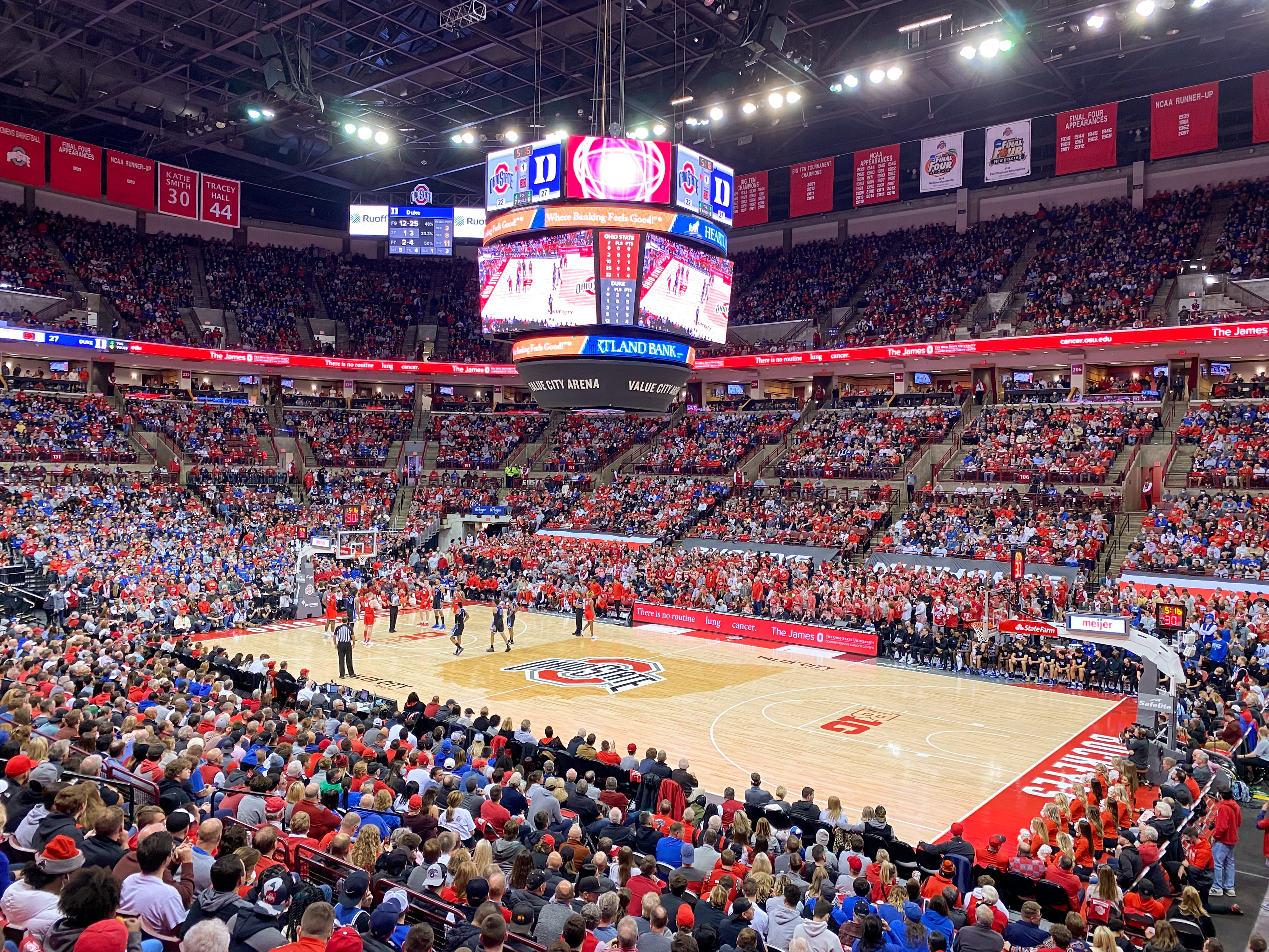
Head coach Chris Holtmann encouraged students to continue following university protocols to mitigate the spread of COVID-19. Credit: Mackenzie Shanklin | Photo Editor
While head coach Chris Holtmann battled COVID-19, the Buckeyes beat Northwestern Sunday for their first home win since their own bout with the virus.
Holtmann praised the efforts of acting head coach Jake Diebler, assistant Tony Skinn and the rest of the support staff in leading No. 16 Ohio State to victory without him on the sidelines. He said the captains of the team helped focus their teammates on both rebounding from a loss and navigating the challenges of the pandemic.
“I believe we have a very, very healthy culture,” Holtmann said. “I think we have exceptional people as upperclassmen and as captains and as staff guys who are aligned in terms of what we believe is most important and how we believe coaching should be.”
Holtmann’s absence came after the Buckeyes returned from going 22 days between games, a result of three cancellations due to COVID-19 health and safety protocols. During that stretch, the Buckeyes halted team activities until Dec. 27, 2021, which took a toll on the team’s overall conditioning strength.
Now three games into their return from the pause, graduate forward Kyle Young — who didn’t play at Nebraska Jan. 2 due to non-COVID related illness — said it was tough for the Buckeyes to readjust to the physical demands of competition.
“It was kind of a slow process getting back into it,” Young said. “Any time you have a layoff like that where guys kind of have to sit out, can’t do much, it’s hard on your body because it’s hard to get that back quick.”
Not only is the Ohio State men’s basketball team back on the hardwood, but Buckeye students are back in the classroom.
At the Big Ten Conference and university levels, Ohio State took steps to ensure safety and mitigate the spread of COVID-19. The university released an update Monday indicating about 3.2 percent of Ohio State students received positive results among those who tested before residence hall move-in.
On Dec. 28, 2021, the Ohio State Department of Athletics released a statement reminding patrons to wear masks at events, calling for a “campus-wide effort” to remain diligent in containing the spread of the virus. On the same day, the Big Ten updated its COVID-19 forfeiture policy, stating if a program is unable to compete due to COVID-19, the game will be rescheduled, declared a no contest or forfeit “Upon review and approval by the Conference office, in consultation with the participating institutions and the Big Ten Chief Medical Officer, Dr. James Borchers.”
Seven days later, the Ohio State Department of Athletics announced the closure of concessions at all university-related athletic events.
The campus community is now getting back to its routine of school work and studying. Likewise, Holtmann said the Buckeyes basketball team shook off some rust their first week back to competition.
“There were some things that were a little bit inconsistent that were more fatigue-related or just a little bit rust-related,” Holtmann said Jan. 5. “I think practice time is great, and we needed that and we still need that. But you can’t duplicate the timing of game reps.”
Young said he believes the Buckeyes are “getting back into a rhythm” during practice and regaining their form they held prior to three-plus weeks of no competition.
“I think our condition is getting back to a point where we’re going to be comfortable playing again at the level we want to play,” Young said. “Game by game, I think that’s just going to get better.”
As students settle into spring semester, Holtmann said the Buckeyes “desperately” need them to support the team at games.
While the closure of concessions and COVID-19 positivity rates may cause apprehension, Holtmann said continuing to follow the university’s protocols will be important for all Buckeyes — the basketball team and the students.
“I think we all agree right now, or at least most of us do, that we’re going to have to continue to live with this,” Holtmann said. “As much as we can do to mitigate it, let’s do that.”


